We will introduce the research of Super-Kamiokande in Japan.It has been exhibited at SKYDOME, Kamioka, Japan.
スポンサーリンク
Japanese Nobel Prize winners ( Super-Kamiokande )
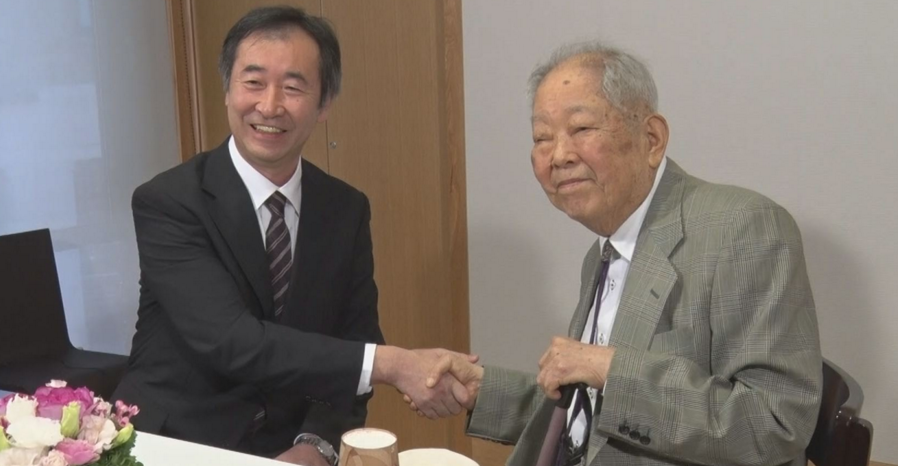
Dr. Kajita Takaaki ( University of Tokyo ) , Dr. Koshiba Masatoshi ( University of Tokyo )
Super-Kamiokande: The World’s Largest Underground Neutrino Detector
Study of neutrinos
Elementary particles are classified into quarks and leptons. Neutrinos are leptons with out charge and come in three types, electron type, muon type and tau type. Normally it is very difficult to detect neutrinos because they rarely interact with other matter. Therefore, the character of neutrinos, such as their masses, has not been well measured.
It is important in elementary particle physics and astrophysics to know if neutrinos have mass or not. In the current established theory of the elementary particles, the mass of neutrinos is assumed to be zero. If the mass is not zero, we would need a new theory. Further more, whether or not the universe continues to expand depends on the total mass of the universe, of which massive neutrinos could contribute significantly. Super-Kamiokande attempts to look at these important issues by observing the neutrino.
Neutrinos originate from various places in the universe such as the center of the sun. cosmic ray collisions in the atmosphere, supernova explosions, nuclear reactors and other. The observation of neutrinos in Super-Kamiokande help make the mysteries of the sun and the evolution of the universe clearer.

The Change of the Neutrino Type
In Super-Kamiokande, neutrino mass is evident from observing neutrino oscillation. Neutrino oscillation is the phenomenon where a particular type of neutrino will change into another type as it travels from its point of creation to its point of detection. This occurs only if neutrinos have non-zero mass.
Search for the proton decay
In our Standard Model of particle physics the proton, for no concrete reason. is assumed to be absolutely stable, However, Grand Unified Theories ( GUTs ), which are necessary to handle some of the Standard Model’s shortcomings and to unify the fundamental forces of nature, predict that the proton can, and in most cases must, decay. The decay would produce lighter, energetic charged particles such as electrons, muons, pions or other which can be observed. Some of the most simple GUTs have already been completely ruled out by Kamiokande. The newest models predict that the proton will decay after a lifetime of 1033 to 1035 years.
In our to measure such long lifetime, many protons must be observed. Super-Kamiokande is the largest detector for the observation of proton decay in the world. it watches about 7.5 × 1033 protons. After 5 year of observation with Super-Kamiokande, it is found that the lifetime of the proton is more than 5 × 1033 years.

Time scale of several phenomena.
Long baseline neutrino oscillation experiment
The evidence of the neutrino oscillation was obtained by the study of atmospheric neutrinos in 1998. An experiment to confirm this observation has started in 1999. The artificial neutrino beams produced at the proton accelerator at KEK, National Laboratory in Japan, are detected by Super-Kamiokande, 250 km away. This type of experiment is called the long baseline neutrino oscillation experiment. After the data accumulation more than 2 years, the experiment has detected 44 events, whereas the expected number of event without neutrino oscillation is 64. This deficit is consistent with the expectation from the atmospheric neutrino oscillation. The experiment will continue to measure another 3 year and will provide precise results in near future.

Study of the solar neutrinos
The sun shines through nuclear fusion which generates neutrinos. These neutrinos are generated in the center of the sun and quickly exit ( in about 2 seconds ) with out loosing informations about their creation. By observing neutrinos from the sun it is possible to know what is happening in the core of the sun. This is difficult or impossible to do with other solar observation methods.
In June 2000, Super-Kamiokande has presented the results of the precise measurements of the solar neutrino flux and the spectrum. The results confirm the deficits of solar neutrinos at the confidence level more than 99%. Further more the precision of the data has constrained on the neutrino oscillation on the neutrino oscillation parameters ( mass difference and mixing ) and has strongly suggested one possible parameter region.
In June 2001, the data from Super-Kamiokande together with the results from a Canadian experiment ( SNO ) revealed the strong evidence of solar neutrino oscillations without referring to the solar model flux calculations. Then the former arguments on the solar neutrino oscillations have been proved to be correct. The conclusions from the 2000 results of Super-Kamiokande will continue to measure solar neutrinos and scrutinize the solar neutrino oscillation parameters.

Neutrino heliograph : Neutrino heliografh measured by Super-Kamiokande.
Study of the supernova neutrnos
A supernova explosion happens when a star at least 8 times more massive than our sun collapse. An enormous amount of energy is released in the form of neutrinos and light in just 10 second.
On February 23, 1987, a supernova explosion occurred in tha Large Magellanic Cloud. From this explosion, the first supernova neutrinos in history were detected. Kamiokande saw only 11 of these neutrinos but this observation showed that the theory of supernova explosion was correct and initiated the dawn of a new era in neutrino astronomy.
A supernova explosion is expected to occur inside our galaxy once every 10 to 50 years. If such an explosion were to occur. Super-Kamiokande expects to find the mechanism of supernova explosions.
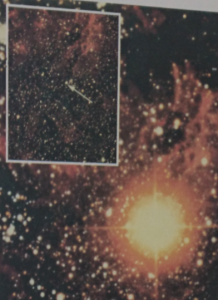
Supernova 1987A, which occurred on February 23, 1987. upper small picture shows before the supernova explosion.
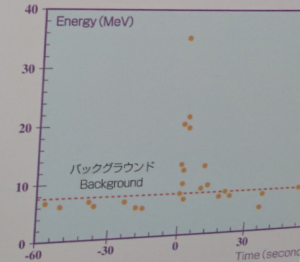
The neutrino data from SN1987A. The 11 event at 0 seconds shows the supernova neutrino events.
Study of the atmospheric neutrinos
Atmospheric neutrinos are generated by the interaction of cosmic rays in the atmosphere. There are two types of neutrinos created, muon type and electron type. The number of neutrinos is predicted to be the same no matter what direction one looks at.
However, after 535 days of data in Super-Kamiokande an amazing result is obtained. The number of muon type neutrinos which are detected going upward through the detector, thus originating on the other side of the Earth, is half of the number detected traveling down through the detector. So far, this difference can only be explained by some of the muon type neutrinos changing or oscillation to occur. neutrinos must have mass.
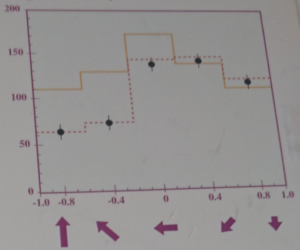
The Zenith Angle Distribution of Muon Neutrinos in Super-Kamiokande.
This points show the observed number of the atmospheric neutrinos, the solid line shows the prediction assuming the neutrino mass is zero, and the dashed line shows the prediction assuming the neutrino has non-zero mass. The arrows show the direction of neutrinos in each bin. This results shows the evidence for neutrino mass.
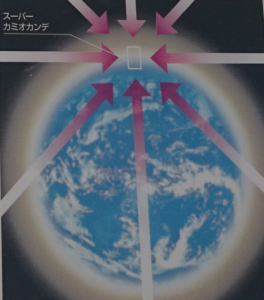
Neutrinos Arriving from Several Directions.